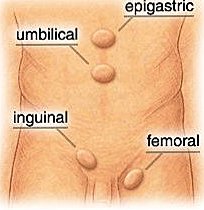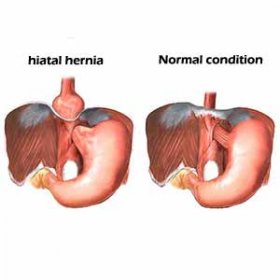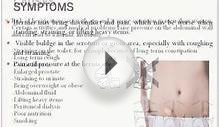
 Gentle yogic stretching in static and dynamic form is ideal for gradually strengthening weak abdominal peritoneum with profuse supply of oxygenated blood that nourishes, activates, tones and strengthens. This improves muscle tensile strength which prevent displacement of internal organs. Exercise as a Hernia solution will also ensure that the Hernia does not recur in adjacent area which is also quite common.
Gentle yogic stretching in static and dynamic form is ideal for gradually strengthening weak abdominal peritoneum with profuse supply of oxygenated blood that nourishes, activates, tones and strengthens. This improves muscle tensile strength which prevent displacement of internal organs. Exercise as a Hernia solution will also ensure that the Hernia does not recur in adjacent area which is also quite common.
Even gymnasts, horse riders or weight lifters can have hernia due to physical stress. Even common cough can aggravate. So more than great fitness it is the specific application of what adds strength to that area which is important.
Its very IMPORTANT that you take special care to avoid forward bending, hunching, jogging, jerks and things that put outward pressure on your abdominal muscle lining for the next couple of years. Rather than stitching a mesh and "bouncing back", be conservative. Don't push your luck.
Yoga Hernia Treatment without surgery will need 1-3 months of your committed effort and patience to heal, but you will be able to avoid the risk of a lifetime of discomfort that is common for Surgery.
Yoga hernia treatment without surgery can be practiced by everyone as it is a natural long term solution without any fear of complications.
Practice the following yoga regularly. YOU MUST support the hernia region with your free palm while you exercise. Choose a time of day you can stick with so that exercise becomes a habit. No matter what time of day you choose to exercise, make sure to plan your workout two to three hours after your meal. Heal Hernia naturally.
CAUTION: The following Exercises are not suitable for Hiatal Hernia. Contact us for a Personalized Video routine if You have Hiatal Hernia
YOGA FOR HERNIA
1. Pavanmuktasana:
Lie down straight on your back. Now bring right knee to your chest. Hold the right knee with your hands and count 5 with normal breathing. Then rest your right leg on ground. Repeat in the same way for left leg and both legs. Do the whole process once again. Then take rest in sabasana.
 Benefits: Blood circulation is increased to all the internal organs and stimulates the nerves.
Benefits: Blood circulation is increased to all the internal organs and stimulates the nerves.
2. Uddiyan in sabasana:
Lie down and bend your legs. Breathe in and push your abdomen out, breathe out and pull your abdomen in. Do this for 10 times. Then take rest in sabasana.
Benefits: Strengthens abdominal muscles, makes bowel movement easier.
3. Utthan padasana hands on hernia:
Lie down straight on your back. Palms will be on hernia region. Now slowly raise both legs upwards up to 30-40 degrees. Hold this position and count 10. Breathing will be normal. After completing place the feet slowly on the floor avoiding any jerks. Then take rest in sabasana.
Benefits: Reduces fat, strengthens abdominal muscles, clears constipation.
4. Sahaj agnisar:
Sit straight in sukhasana posture. Place both palms on the abdomen and the palms should rest on either side of the navel. The thumbs should be placed at the sides and the other four fingers should meet the navel. Now take a deep breath and exhale. While exhaling push your abdomen inside with the help of your four fingers. Do this for 5 times. After completing take rest in sabasana.
Benefits: Improves blood circulation to the entire abdominal area.
5. Sabasana:
Lie down on your back and relax your whole body, as if you have gone to sleep. Place a cold towel on top of the eyes. In this posture, keep the mind clean from all worries and thoughts. Savasana is mandatory after performing every set of other Asana. Do this for 5 minutes.
Benefits: A calm and relaxed posture beneficial to the mind and body.
The term hernia means displacement of the internal organ or protrusion or herniation of the viscera. The internal part of stomach pops outward, forming an abnormal swelling. When our stomach muscles get weak, some portions of the intestine swell up by pushing the weak stomach muscle.
Types Of Hernia:
1. Inguinal Hernia:
The inguinal canal is a passage in the front abdominal wall. For some reason, if the intestine enters into the inguinal region, it is called Inguinal Hernia. This type of hernia is largely visible in men. A hole inside this muscular layer is known as Internal Inguinal Ring. As a result of this opening, the contents of the abdomen such as intestine may protrude through the abdominal wall muscle and the elongated portion hangs out.
2. Umbilical Hernia:
The naval portion is called umbilical region. An umbilical hernia is an outward bulging (Protrusion) of the Abdominal lining, or part of the abdominal organ or organs, through the area around the belly button. For some reasons, if the intestine becomes narrower and forms space, or swells out near the naval area, the naval appears big, this type of hernia is called Umbilical Hernia.
RELATED VIDEO












